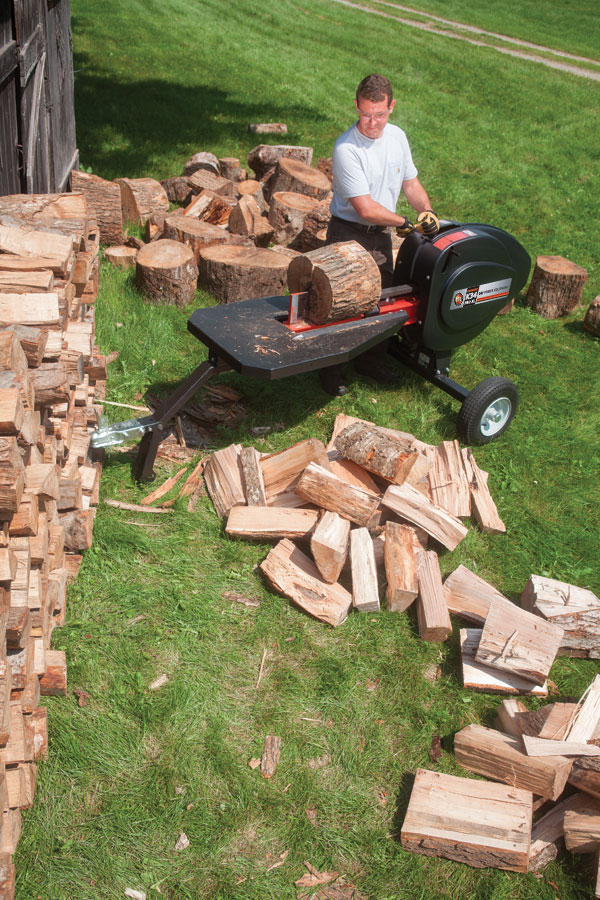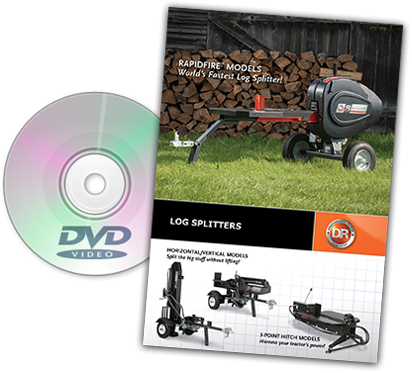Why Are Flywheel Log Splitters Faster Than Hydraulics?
 Flywheel log splitters (sometimes referred to as “Kinetic” log splitters) are faster than hydraulic log splitters – that’s a fact. With 3-second cycle times (sometimes even less), compared to hydraulic splitters’ 15, 20, or even 30-second cycle times, they are the most efficient way to split wood. But what makes flywheel log splitters so fast? What’s the secret?
Flywheel log splitters (sometimes referred to as “Kinetic” log splitters) are faster than hydraulic log splitters – that’s a fact. With 3-second cycle times (sometimes even less), compared to hydraulic splitters’ 15, 20, or even 30-second cycle times, they are the most efficient way to split wood. But what makes flywheel log splitters so fast? What’s the secret?
The secret is a bit of simple math (no notebook and #2 pencil required).
Power = Force x Speed
Power is what you get when you multiply force times speed. (Sure, for you math-heads out there, there is a bit more to it than that, such as acceleration, but for our purposes here, that’s all the equation we need.) Hydraulic splitters use low speed and high force (tonnage). They’re slow, but they can produce a lot of force to get the power needed to slice through tough logs.
Flywheel log splitters, on the other hand, do the opposite. They use high speed and low force to create the same amount of power. The result is the ability to split through the same tough logs, but at amazing speeds. The Pro-XL model RapidFire Kinetic Log Splitter, for example, can outsplit a 34-ton hydraulic splitter. This is because even though it uses less force, it uses enough speed to give it equivalent power.
Want to see for yourself? Check out the split off between the RapidFire Flywheel Log Splitter and a 34-ton hydraulic splitter:
Want to learn more about DR Log Splitters?
Order your FREE Buyer's Guide & DVD!

What's inside
- 24-Page Buyer's Guide
- Action-Packed DVD
- Money-Saving Promotions